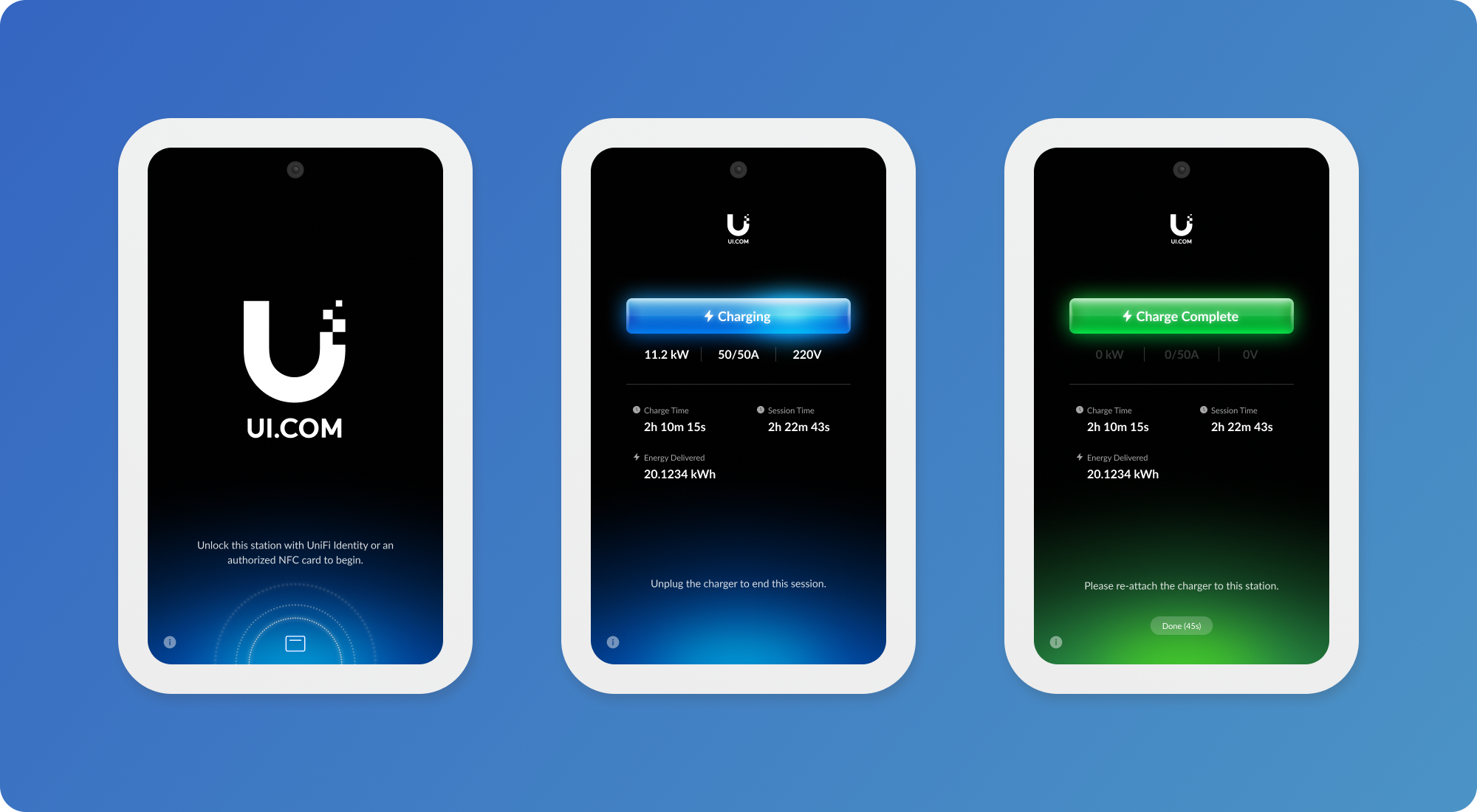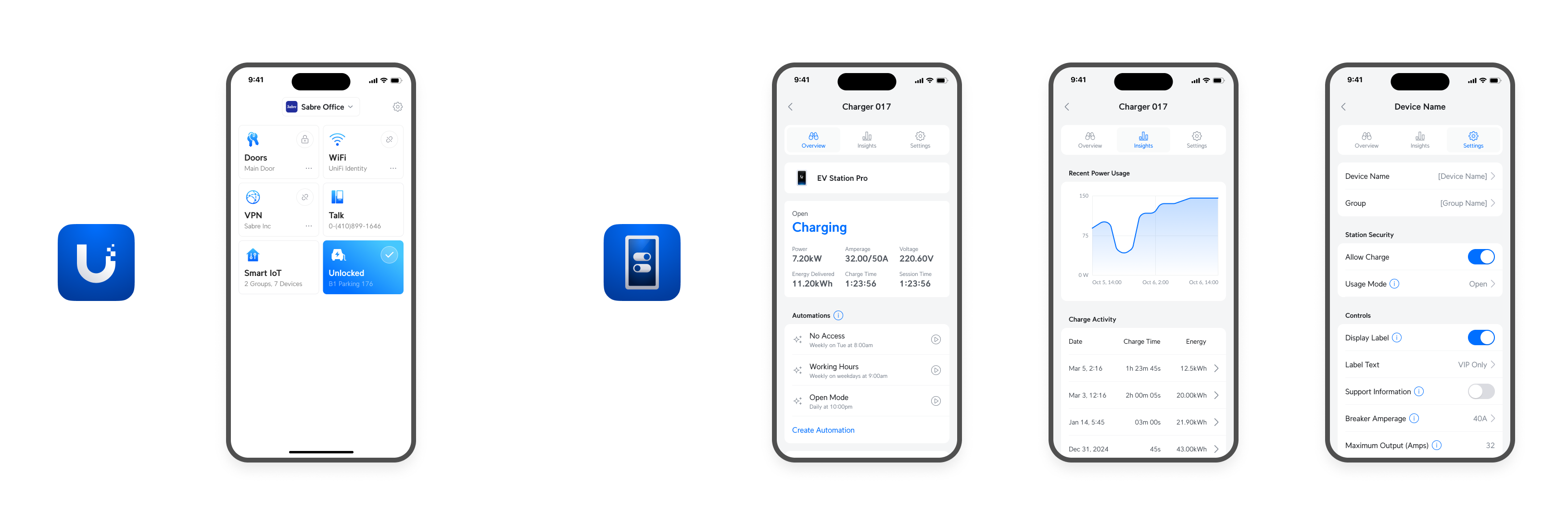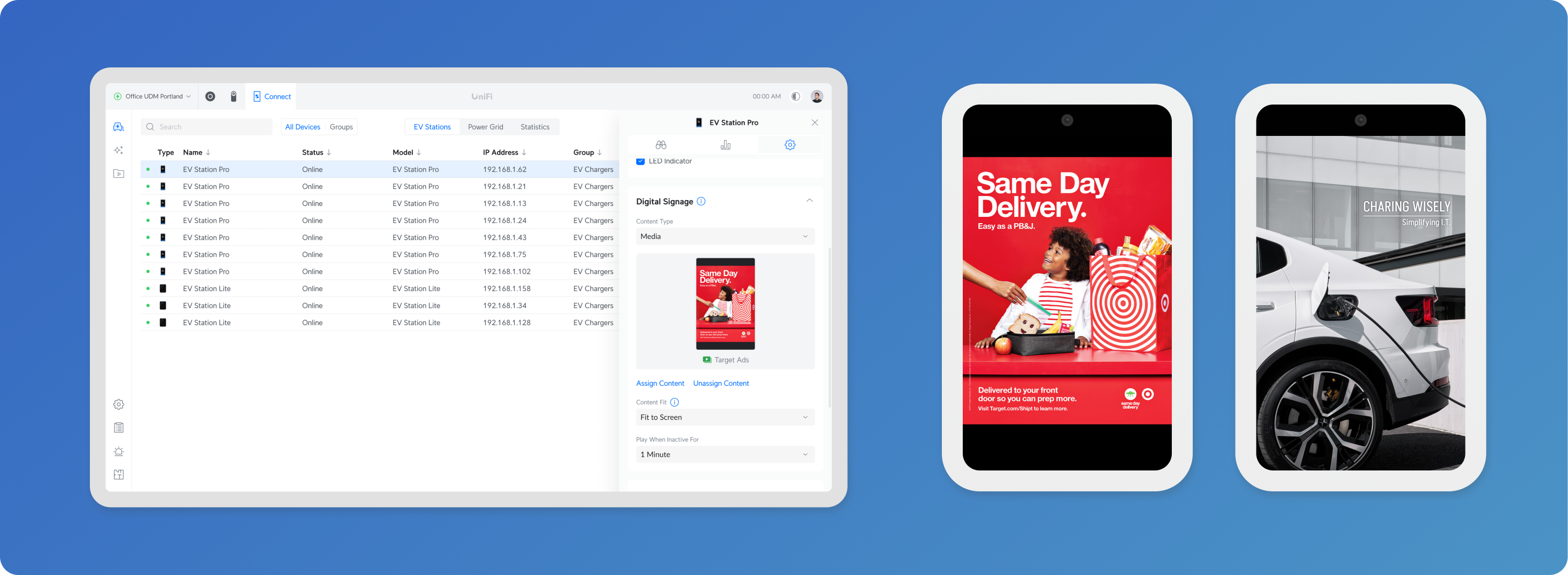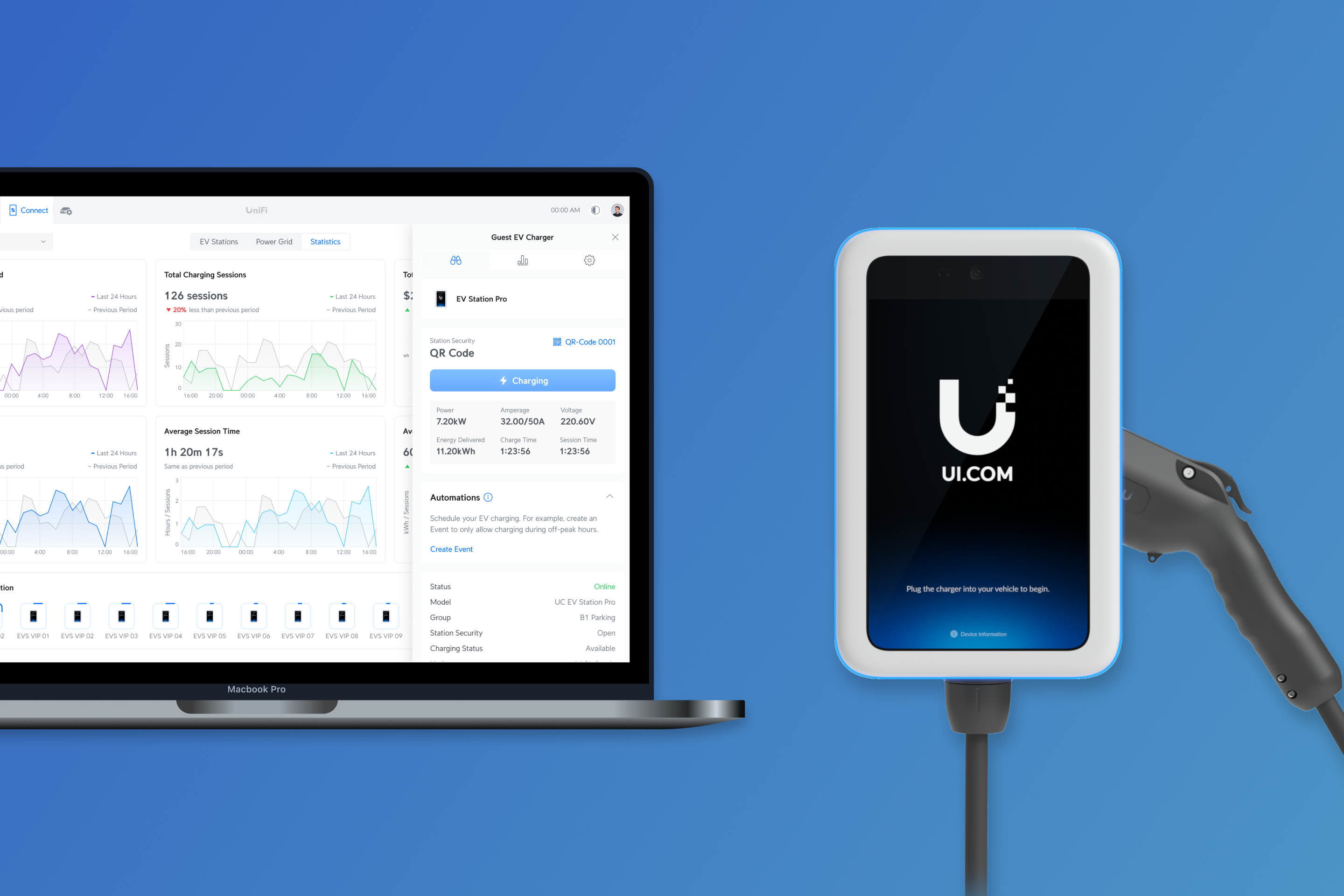
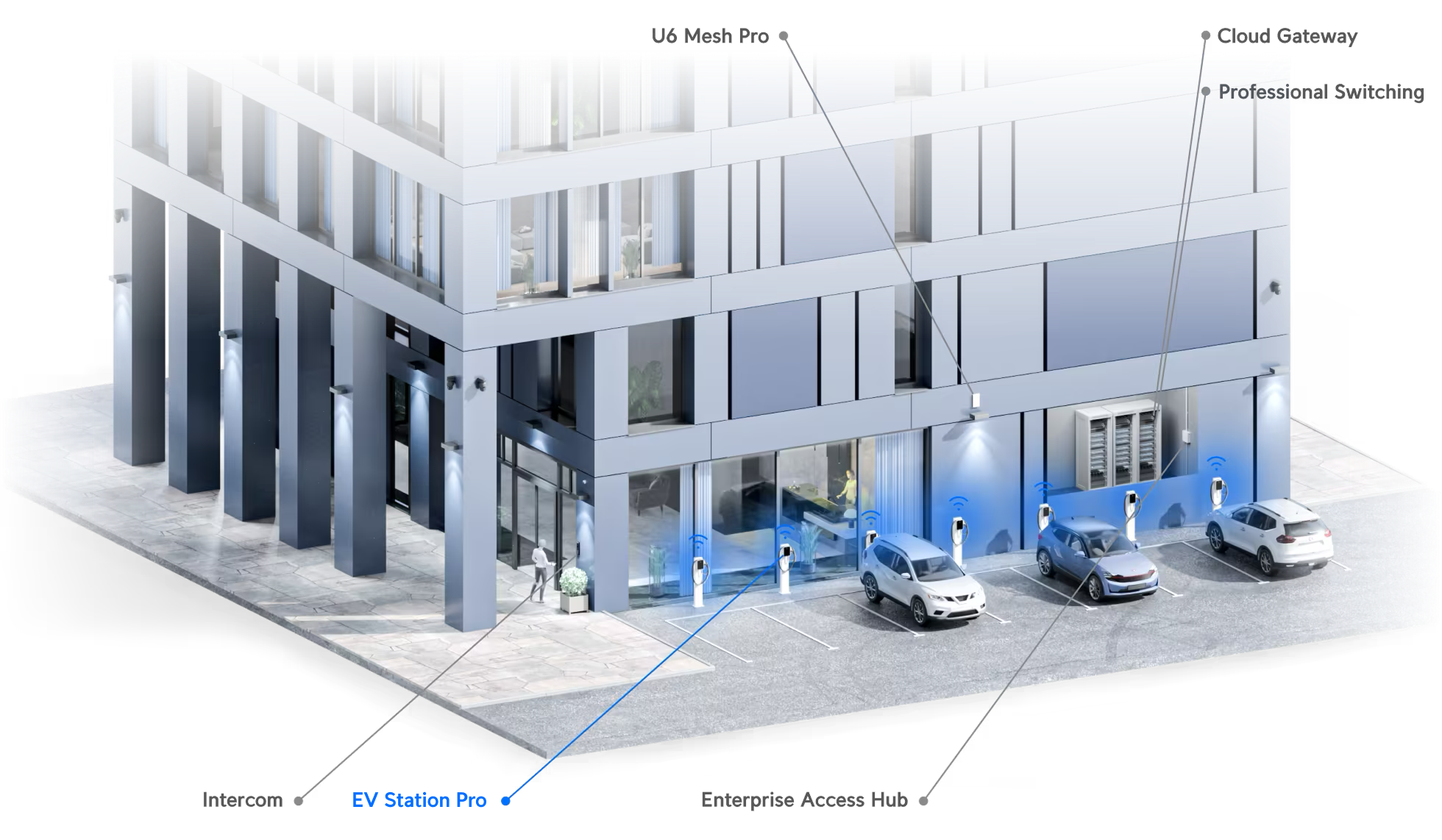

References gathered from online sources and user-uploaded content, organized in FigJam for internal discussion and comparison.
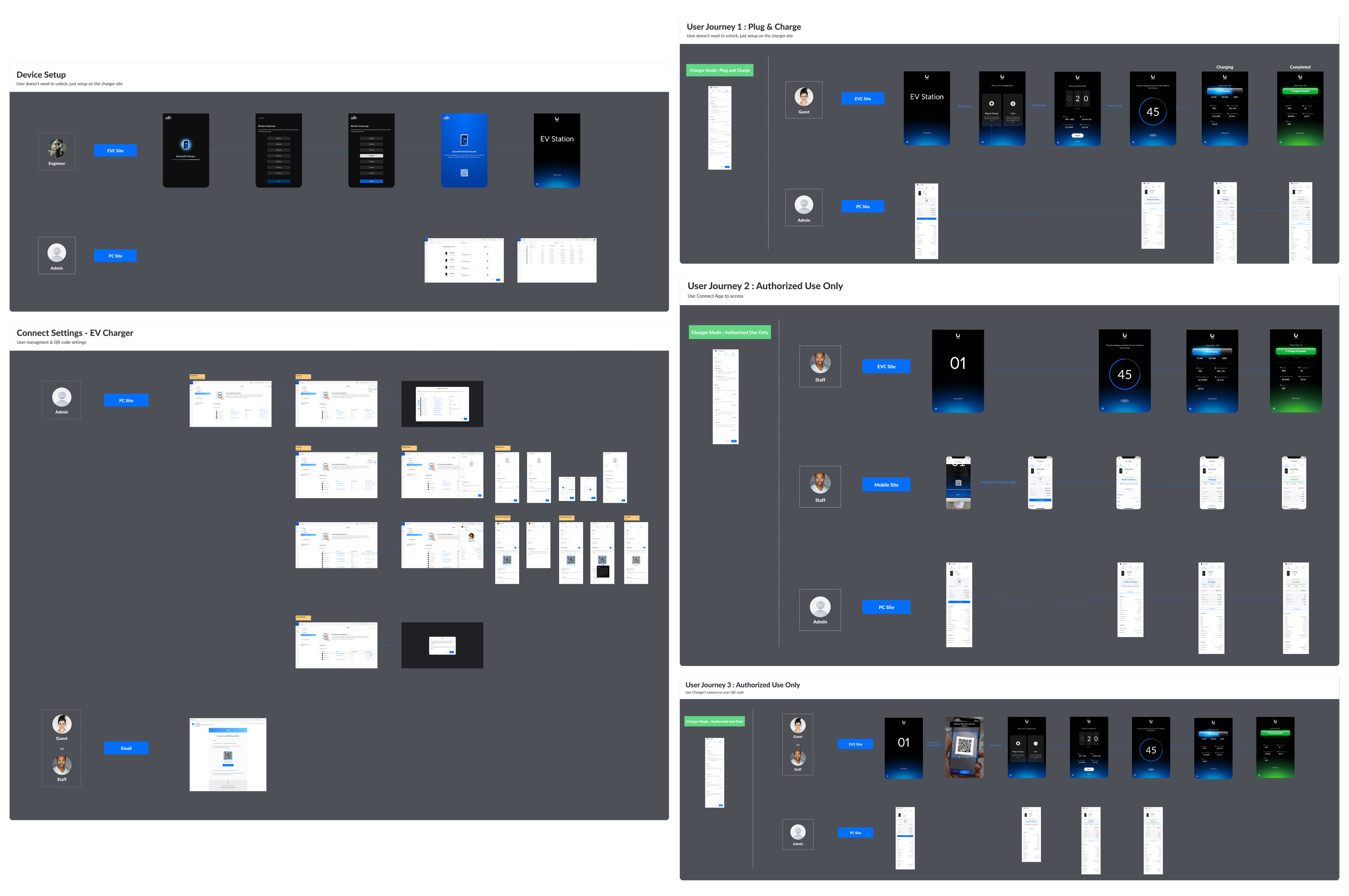

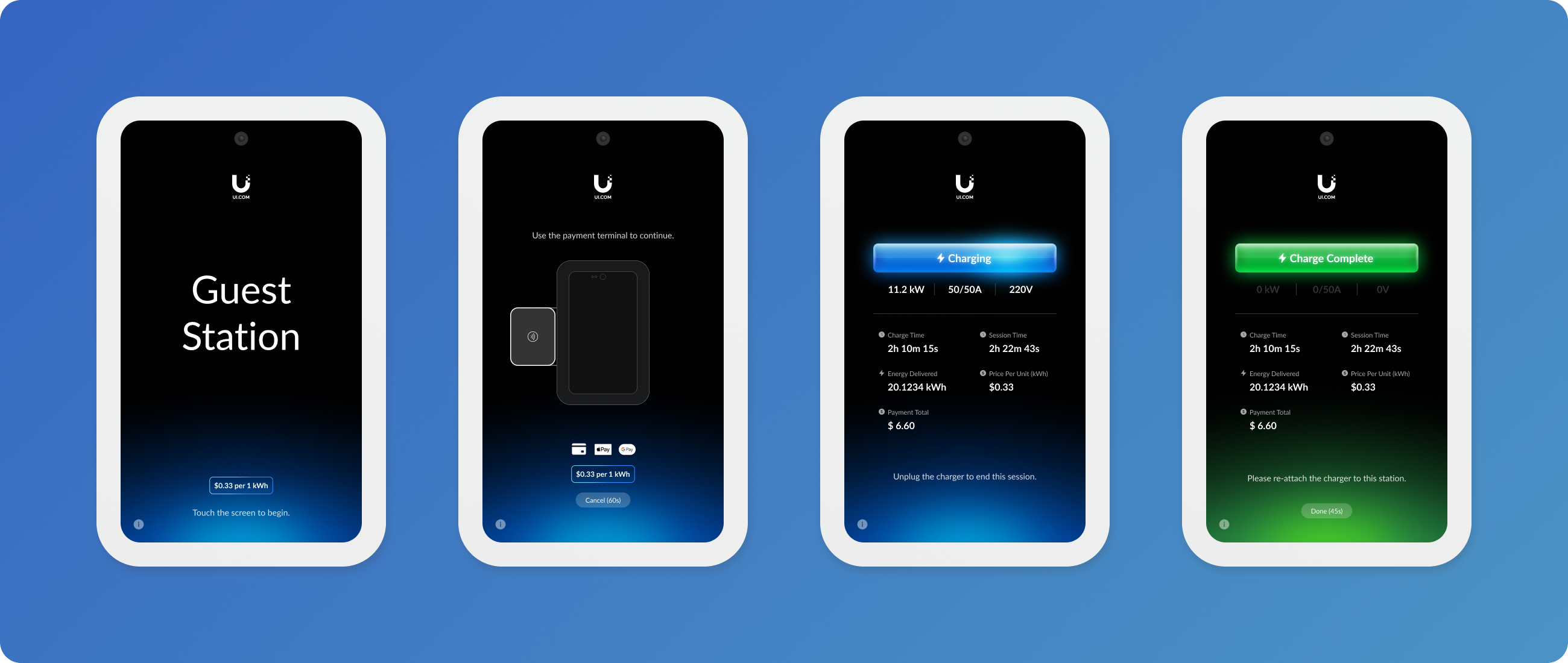


Product Impact
As a hardware-focused enterprise product, the EV Station system has been adopted by over 1,000 enterprise users, with overwhelmingly positive feedback—from both users and executive leadership.
Selected NPS survey comments from enterprise users:
- “Just keep up the good work. You're always coming up with awesome new ideas.” – ★ 10/10, United States
- “It works and is very user friendly.” – ★ 10/10, United Kingdom
- “Amazing enhancement! You're doing great, guys!!” – ★ 10/10, United States
- “Ease of use.” – ★ 9/10, United States
- “It's becoming a platform that exceeds its original architecture.” – ★ 10/10, United Kingdom
Direct feedback from Ubiquiti’s CEO:
“I’m using EV Station Pro and it is a great experience.”
Several YouTubers shared hands-on experiences with the EV Station, highlighting its intuitive interface and seamless installation process. These real-world reviews not only praised the user experience but also helped surface additional needs and opportunities for future improvement.
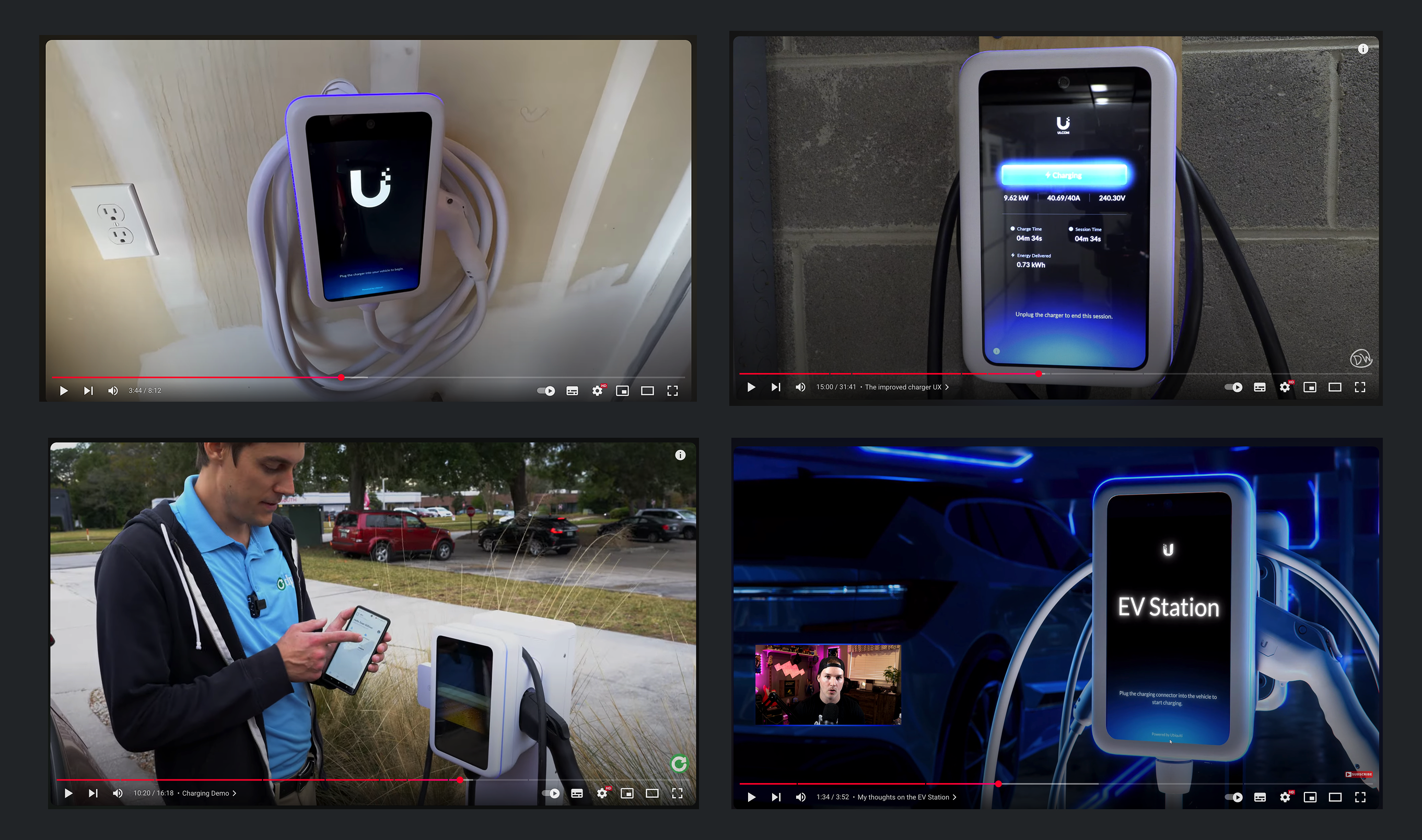
Designing Ubiquiti’s EV Charger System
Defined cross-platform experiences across hardware, web, and mobile interfaces to support both EV users and enterprise administrators.



References gathered from online sources and user-uploaded content, organized in FigJam for internal discussion and comparison.





Product Impact
As a hardware-focused enterprise product, the EV Station system has been adopted by over 1,000 enterprise users, with overwhelmingly positive feedback—from both users and executive leadership.
Selected NPS survey comments from enterprise users:
- “Just keep up the good work. You're always coming up with awesome new ideas.” – ★ 10/10, United States
- “It works and is very user friendly.” – ★ 10/10, United Kingdom
- “Amazing enhancement! You're doing great, guys!!” – ★ 10/10, United States
- “Ease of use.” – ★ 9/10, United States
- “It's becoming a platform that exceeds its original architecture.” – ★ 10/10, United Kingdom
Direct feedback from Ubiquiti’s CEO:
“I’m using EV Station Pro and it is a great experience.”
Several YouTubers shared hands-on experiences with the EV Station, highlighting its intuitive interface and seamless installation process. These real-world reviews not only praised the user experience but also helped surface additional needs and opportunities for future improvement.

Designing Ubiquiti’s EV Charger System
Defined cross-platform experiences across hardware, web, and mobile interfaces to support both EV users and enterprise administrators.



References gathered from online sources and user-uploaded content, organized in FigJam for internal discussion and comparison.





Product Impact
As a hardware-focused enterprise product, the EV Station system has been adopted by over 1,000 enterprise users, with overwhelmingly positive feedback—from both users and executive leadership.
Selected NPS survey comments from enterprise users:
- “Just keep up the good work. You're always coming up with awesome new ideas.” – ★ 10/10, United States
- “It works and is very user friendly.” – ★ 10/10, United Kingdom
- “Amazing enhancement! You're doing great, guys!!” – ★ 10/10, United States
- “Ease of use.” – ★ 9/10, United States
- “It's becoming a platform that exceeds its original architecture.” – ★ 10/10, United Kingdom
Direct feedback from Ubiquiti’s CEO:
“I’m using EV Station Pro and it is a great experience.”
Several YouTubers shared hands-on experiences with the EV Station, highlighting its intuitive interface and seamless installation process. These real-world reviews not only praised the user experience but also helped surface additional needs and opportunities for future improvement.

